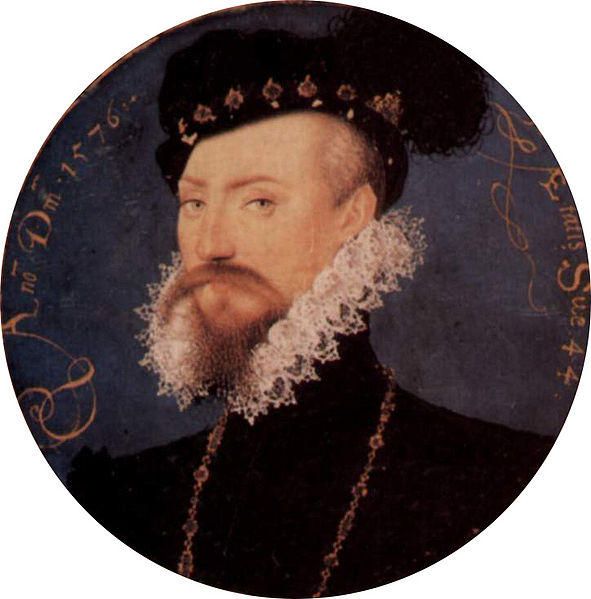Firstly an apology, for giving my reincarnated Robert Dudley the surname Studley in Sister to Sister. I see you wince. But I couldn’t help it. When I look at those portraits of Elizabeth’s favourite, the love of her life, I see a man a little bit in love with himself. The flamboyant clothes, the pointy beard, that look in his eye. One eminent historian described Lord Robert as a ‘wide boy’.
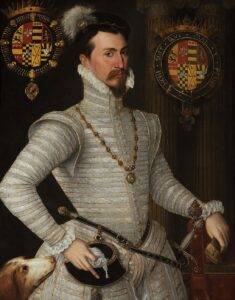
Robert Dudley, Earl of Leicester, painted in about 1564
Those eyes. Historians have described them as ‘twinkly’; historical fiction novelists often refer to them as ‘flashing’. Elizabeth’s nickname for him was ‘eyes’, and she would draw a pair like this ôô on her letters to him. (Did Elizabeth invent emojis?)
But I can’t help liking him. I feel he had quite a sense of humour, and he was good at the things a girl likes – witty, intelligent, excellent horseman, sporty, patron of the arts and exciting expeditions of exploration, and although I’m a little suspicious of his motivation where his queen was concerned, bearing in mind he had a wife tucked away in the country, I think he probably did love Elizabeth.
Here, then, are the facts about Lord Rob:
- He and Elizabeth knew each other all their lives – they were childhood playmates.
- His father was the super-powerful Lord John Dudley, Lord Protector of England during the reign of Elizabeth’s younger brother, Edward VI. John was wildly, ruthlessly ambitious and determined to hold on to power after Edward’s death. Knowing this was imminent, he married his son Guildford off to Lady Jane Grey, Edward’s Protestant cousin, gambling on the fact that the English people wouldn’t want a return to Roman Catholicism under Mary Tudor, next in line after Edward. He then made sure Edward named Jane as his successor in his will.
- But John misjudged the mood of the country. Mary was Edward’s heir, Catholic or not. Lady Jane Grey was queen for only nine days before Mary was proclaimed queen, and poor Jane and Guildford, just teenagers, were thrown into the Tower and later beheaded for treason, along with John.
- Robert was condemned to death for assisting in his father’s plot. He was aged 21, and Elizabeth was also in the Tower at this point, suspected of conspiracy.
- While in prison, Robert was visited by his wife, Amy Robsart, the daughter of a gentleman farmer from Norfolk. The pair had married for love at the age of 17.
- Mary later released Robert, and he took part in her husband King Philip of Spain’s military campaign in France, which led to Robert’s full rehabilitation.
- When Elizabeth took the throne, she quickly appointed Robert as her Master of the Horse, an important role that brought with it ‘close attendance’ on the sovereign [winky emoji].
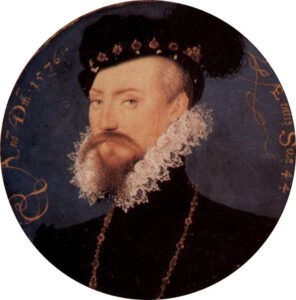
A miniature painting of Robert Dudley, by Nicholas Hilliard. He loved a fine moustache!
- Later Robert was made a Privy Councillor and was counted among the most powerful men in England. And he was rich. Very, very rich. Elizabeth gifted him lands and castles. They rode together, danced together; Elizabeth openly flirted with Robert, and gossip was rife. Ambassadors sent word back to their Emperors and kings that the Queen of England’s favourite had rooms adjoining hers, and English nobles wrung their hands as she found reasons to turn down suitors who would have brought with them alliances … and the means to procure an heir to the throne.
- Philip II was informed: Lord Robert has come so much into favour that he does whatever he likes with affairs and it is even said that her majesty visits him in his chamber day and night.
- Would Elizabeth marry Robert? People began to ask the question, as rumours swirled that Amy was sick. In that same report to Philip II, the informant wrote: People talk of this so freely that they go so far as to say that his wife has a malady in one of her breasts and the Queen is only waiting for her to die to marry Lord Robert.
- Then Amy was found dead at the foot of a flight of stairs, her neck broken. It’s a great English mystery – what happened? Did she fall? Did she kill herself? Or was she murdered? Robert was tried for her murder but acquitted. Perhaps even the small flight of stairs she tumbled down was sufficient to cause a broken neck due to that ‘malady in one of her breasts’.
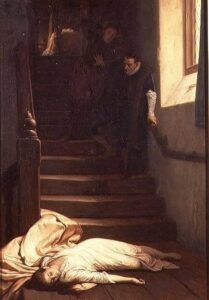
The Death of Amy Robsart, as imagined by William Frederick Yeames, 1877
- Whatever the truth, Elizabeth couldn’t marry Robert. It would have been a wildly unpopular move, given the suspicions about Amy’s death, and Elizabeth cared very much what her people thought.
- The nobility didn’t want a bar of it, either. Robert was far too powerful. Plots to kill him abounded, and he took to wearing protective chain mail under his clothes.
- Robert lived in hope, for many years, encouraged by Elizabeth, but as time went on it became clear she was never going to say ‘yes’. He remained very much her favourite, but she always turned him down. “I would rather be a beggar and single than a queen and married,” she said.
- Robert eventually married Lettice Knowles, a cousin of Elizabeth’s who looked like a younger, prettier version. Poor Elizabeth! She was deeply hurt, and furious, and in a fit of jealous rage banished Lettice from court, for ever. But not Robert. He was still required to stay by her side.
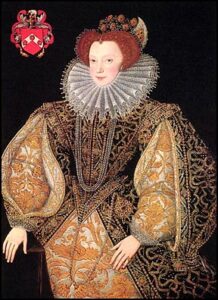
Lettice Knowles, Countess of Leicester, painted c1585 by George Gower
- When Robert died, age 56, Elizabeth was grief-stricken and shut herself in her apartment for days, until Lord Burghley (William Cecil) had the door broken down.
- Elizabeth kept a letter Robert sent her 6 days before his death in a treasure box by her bed. It was found after she died, 15 years later, and she’d labelled it ‘His last letter’. Every time I think about that it brings a tear to my eye. Her great love, who she couldn’t marry because she knew that if she did, she’d be giving up all her power. Career, or love? It seemed having it all was impossible for Elizabeth.
